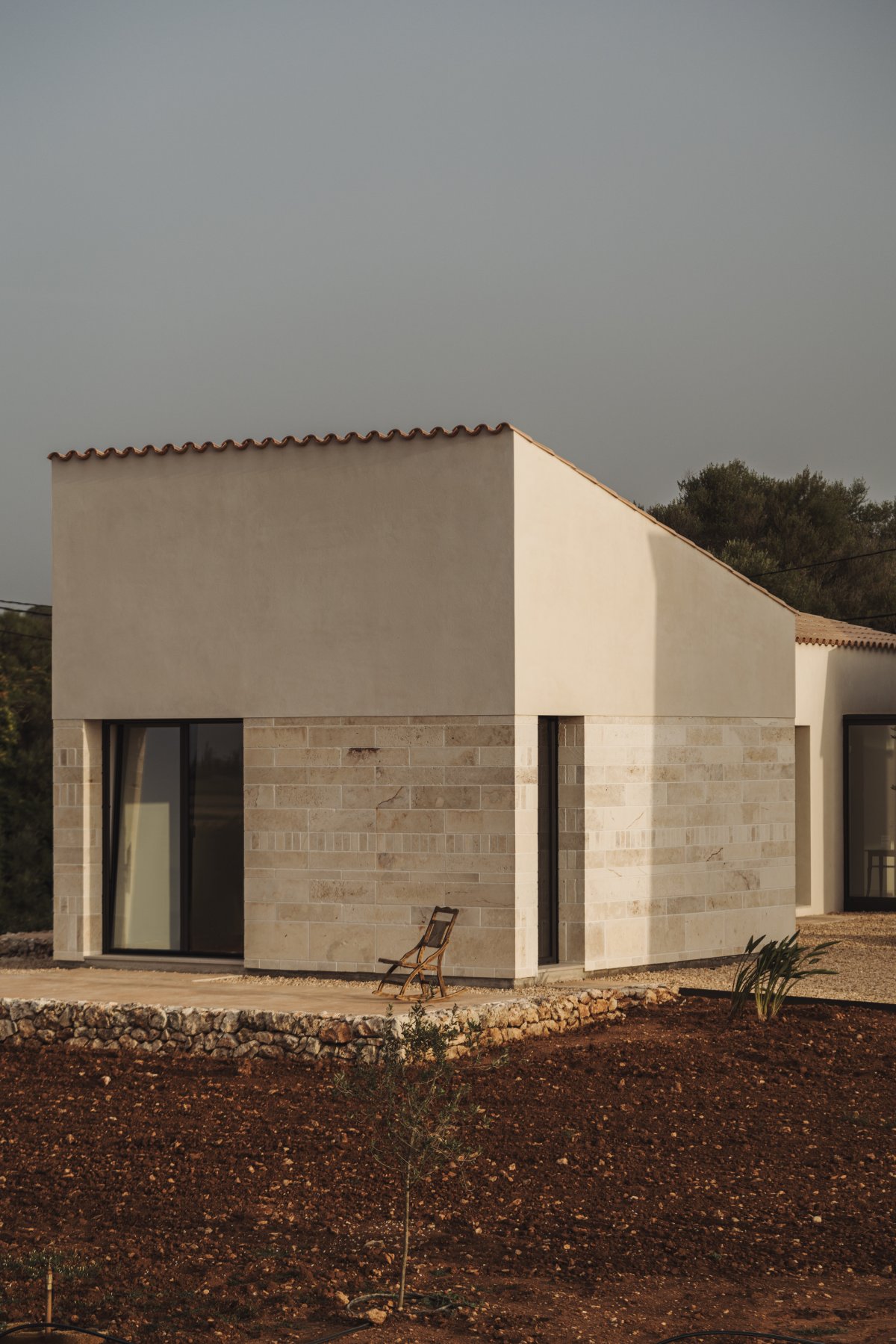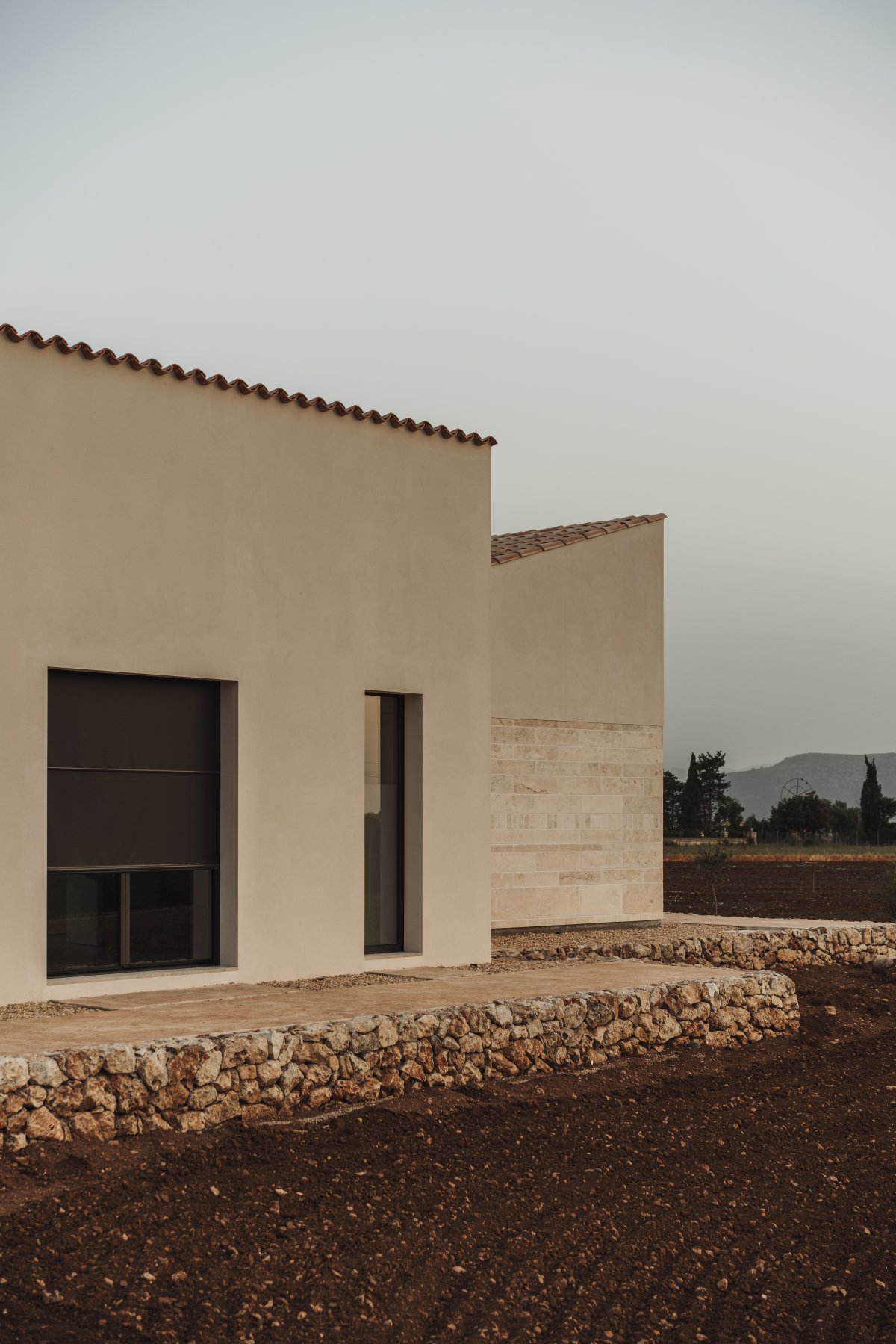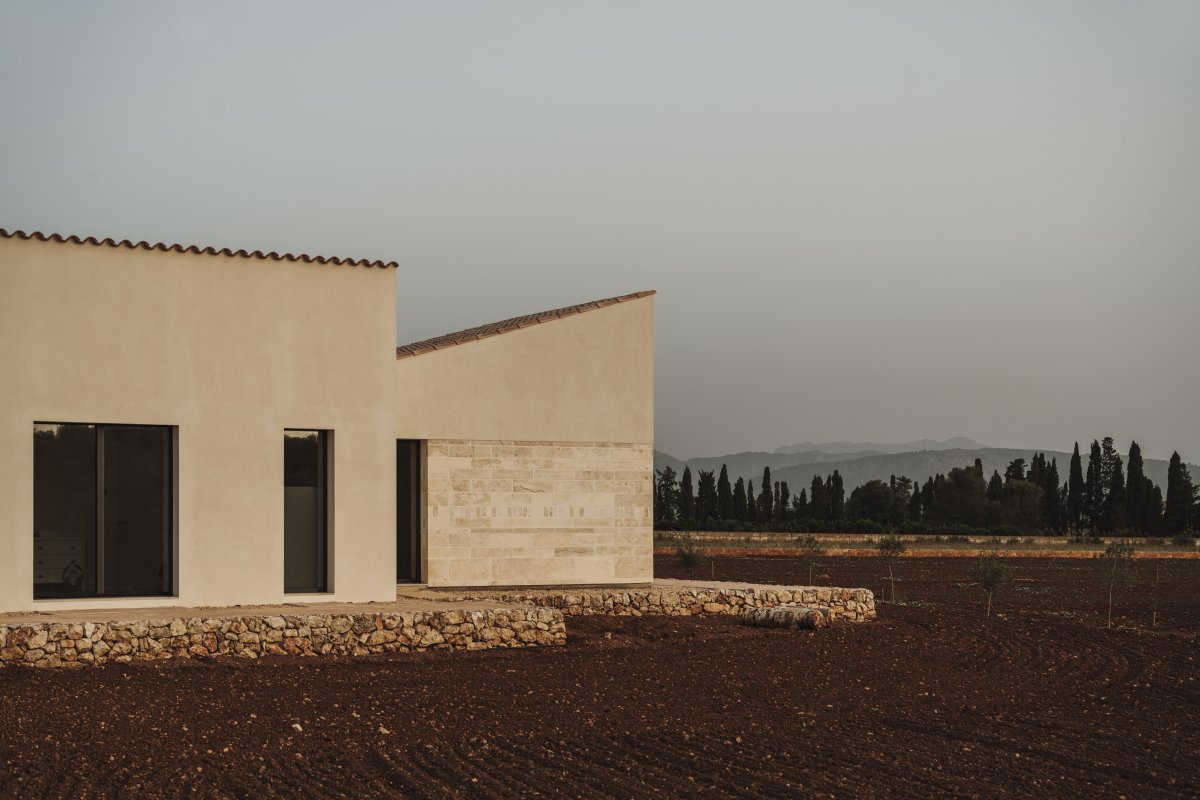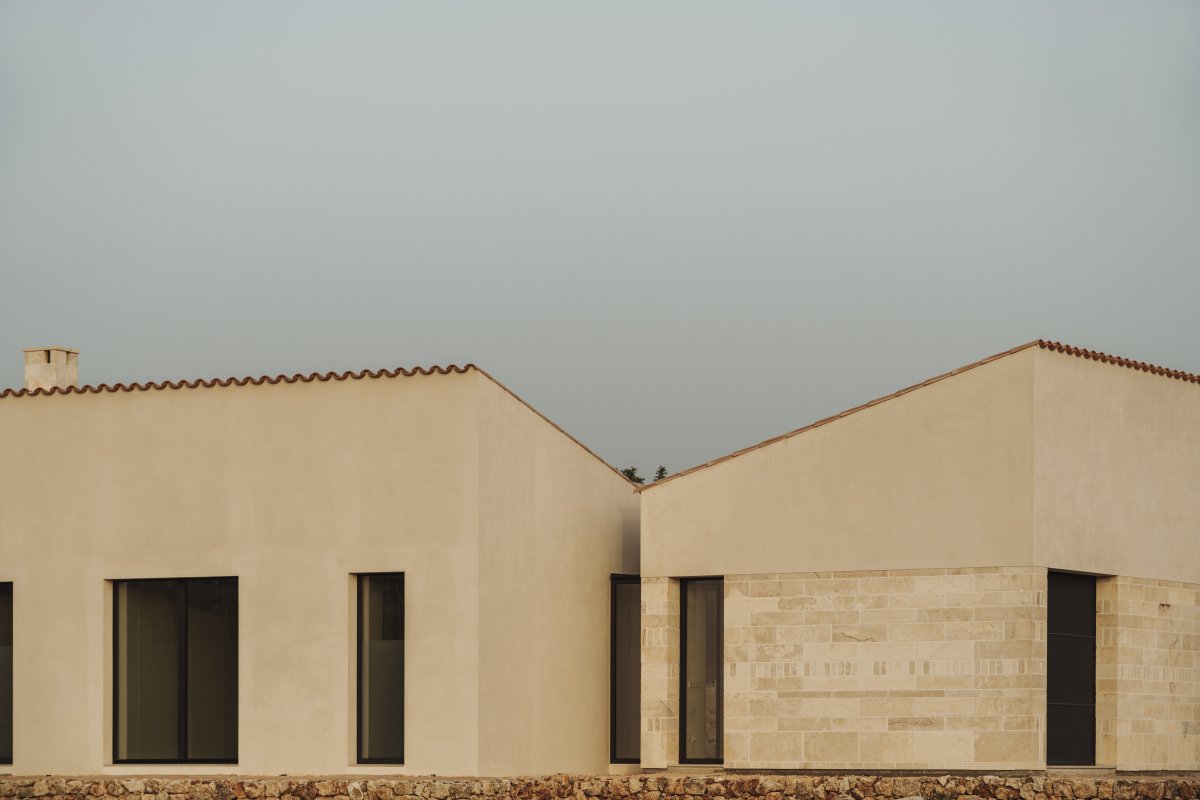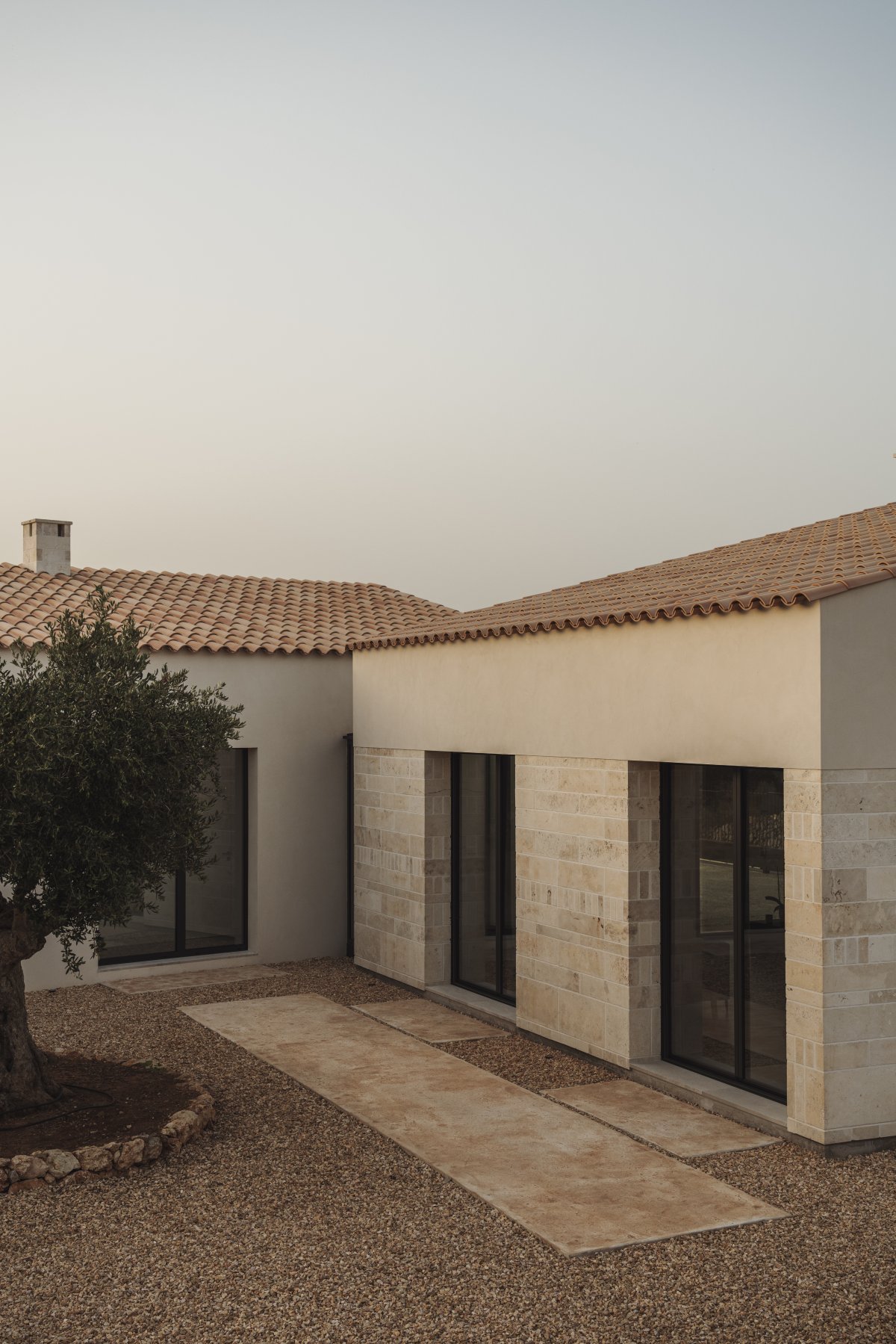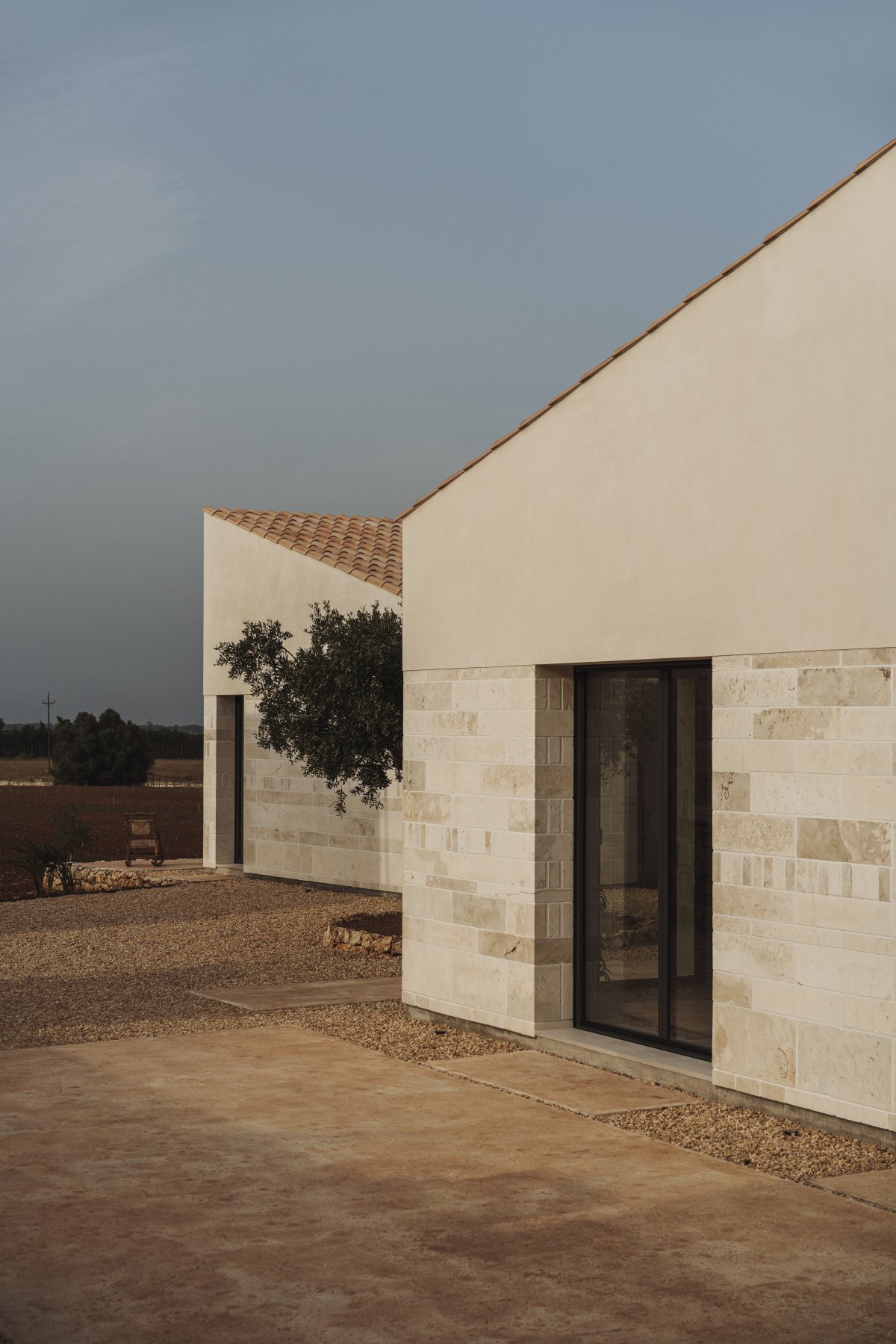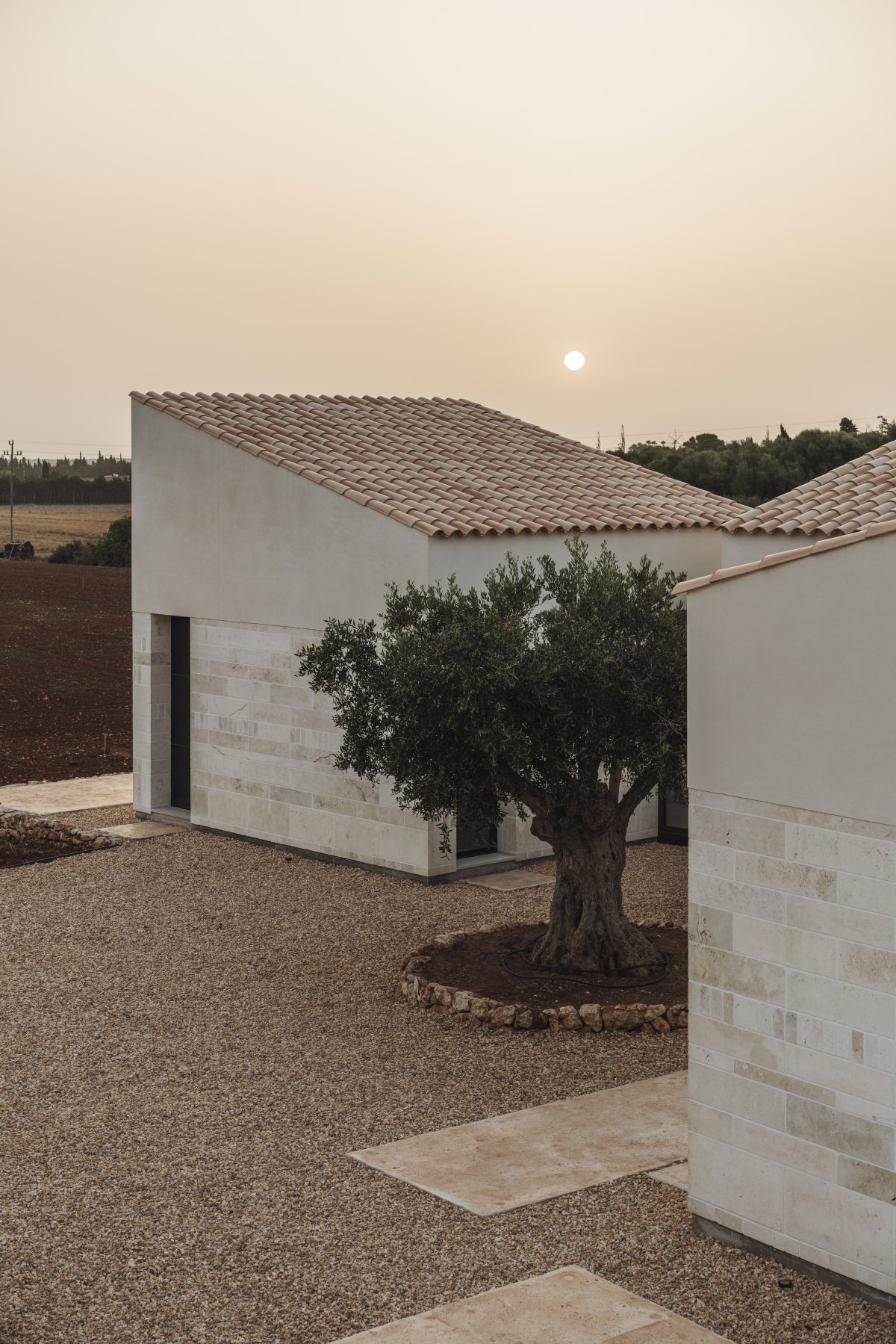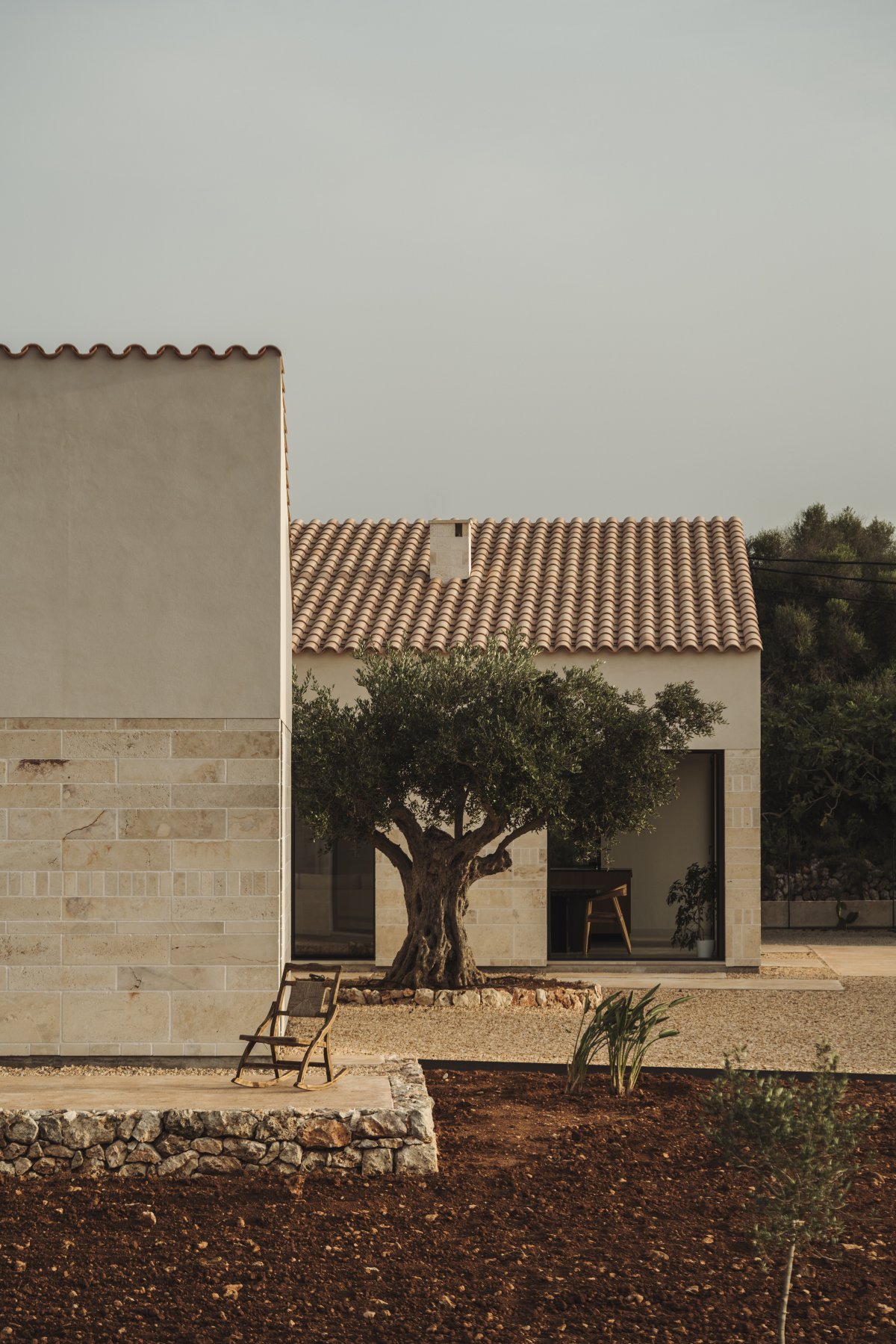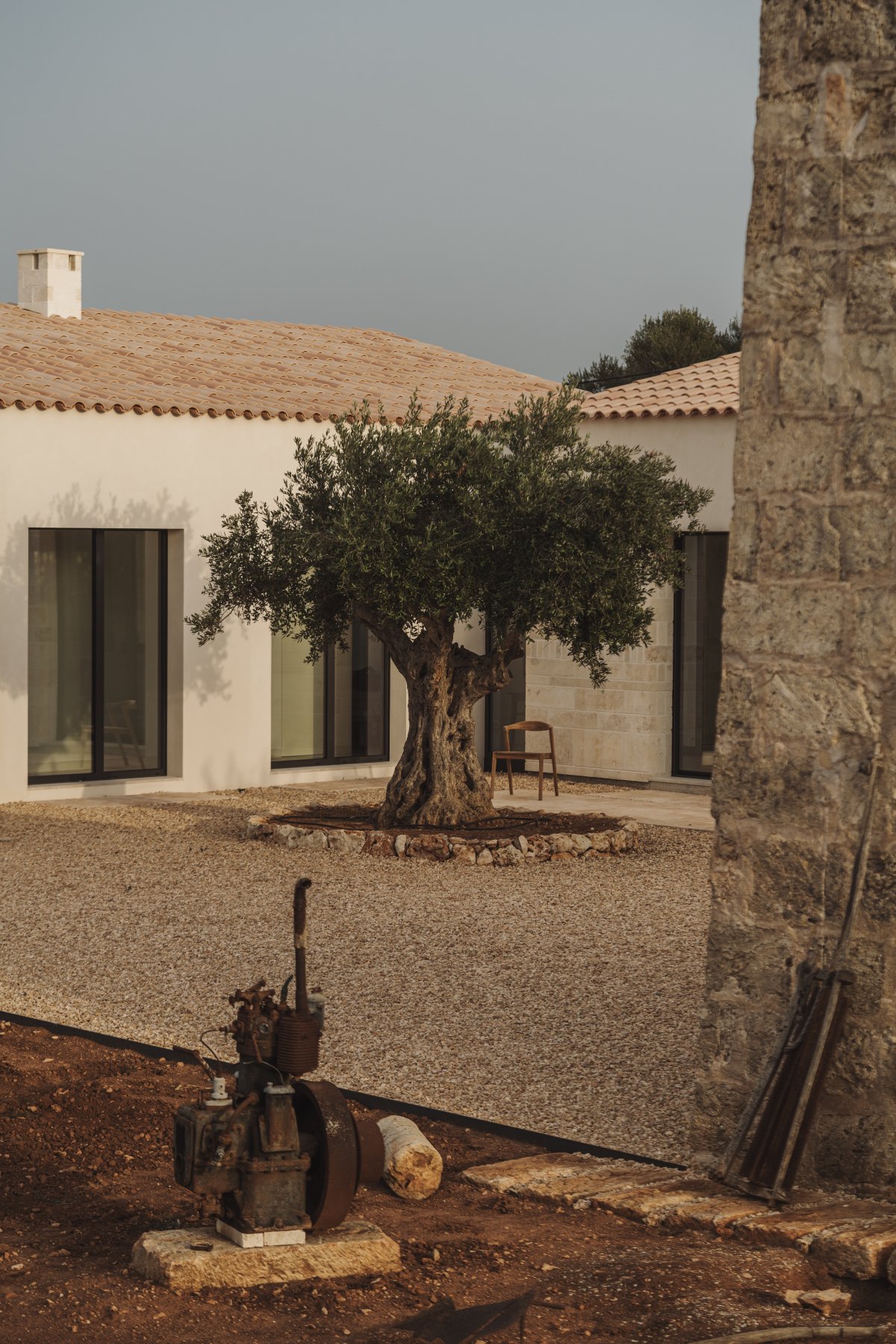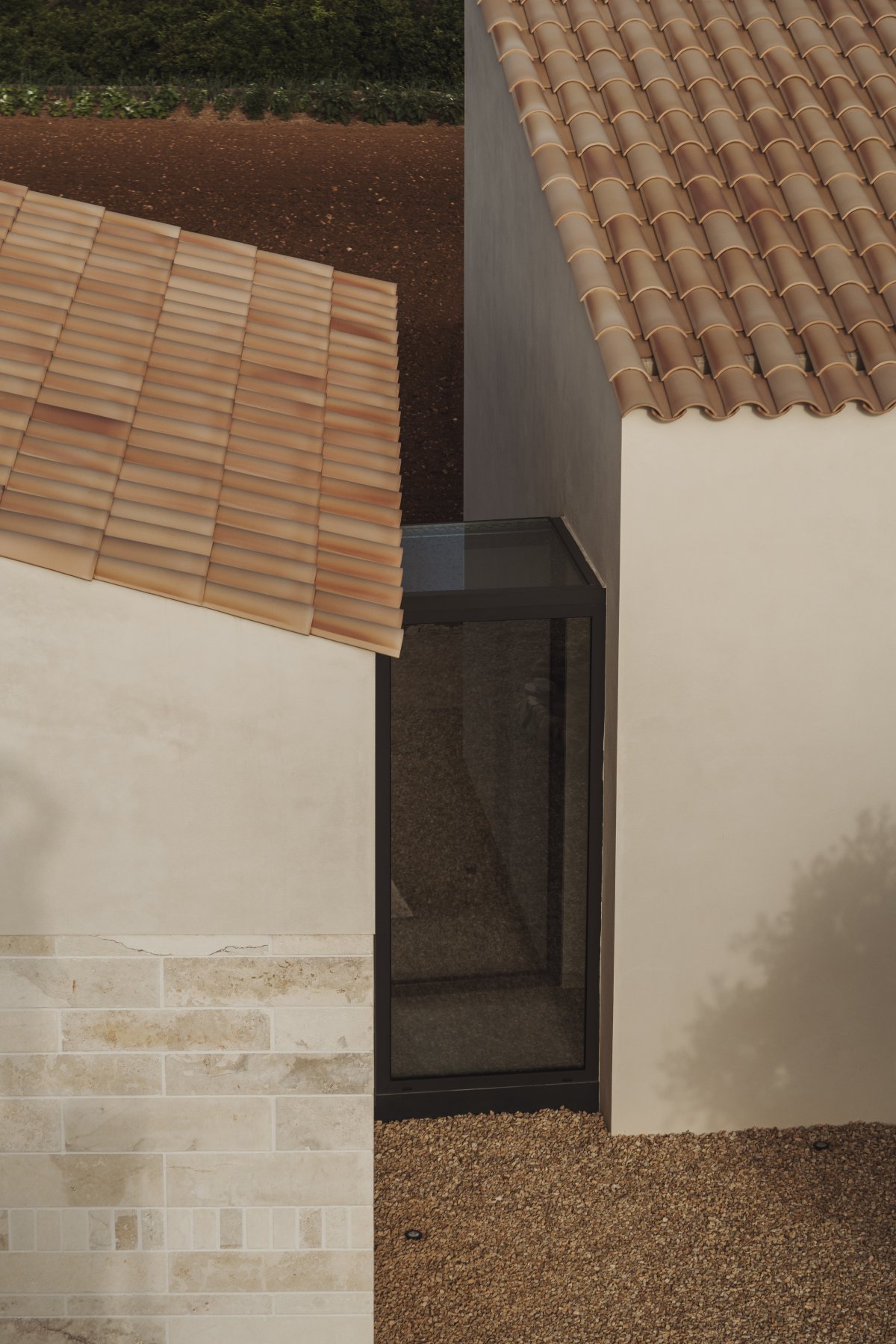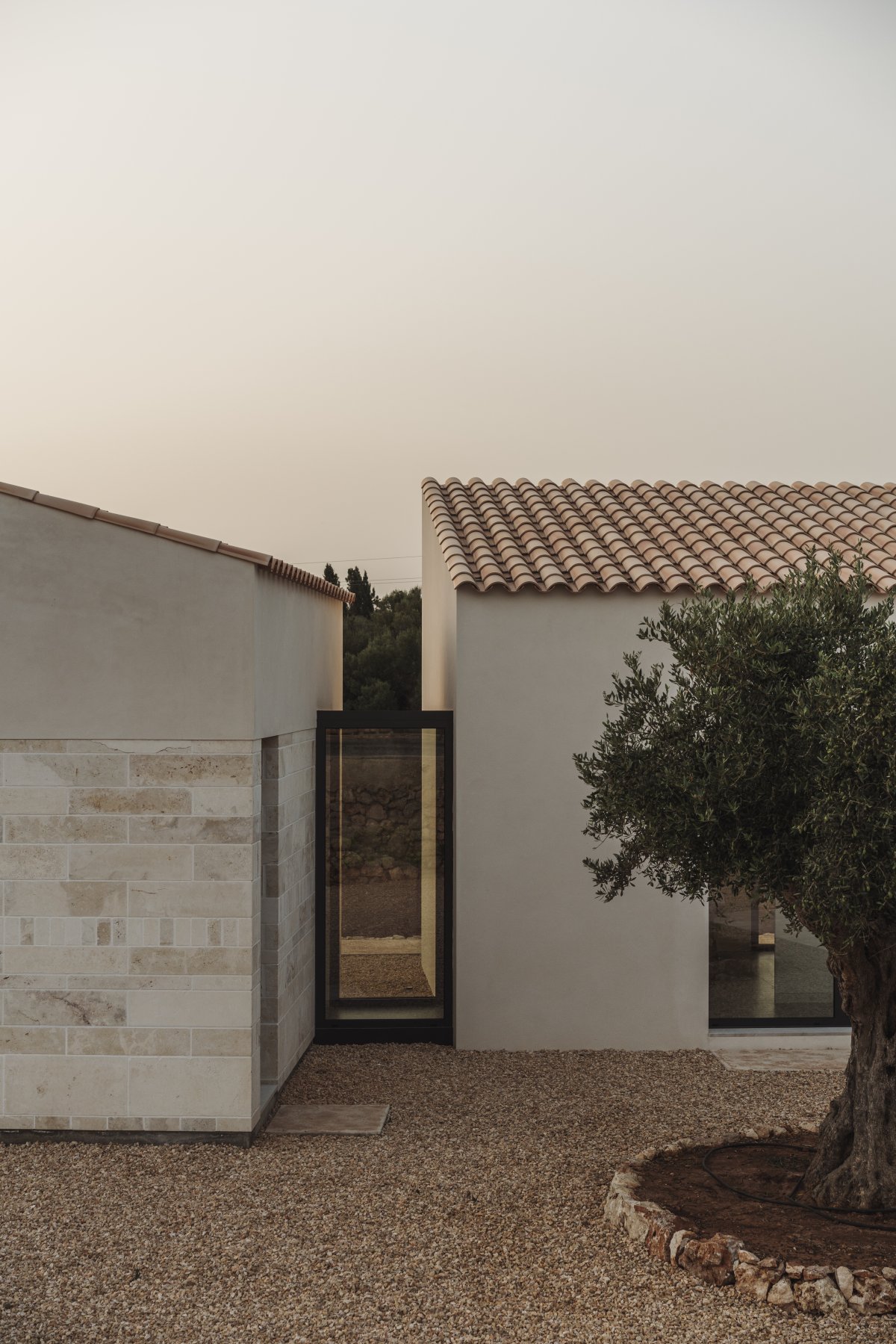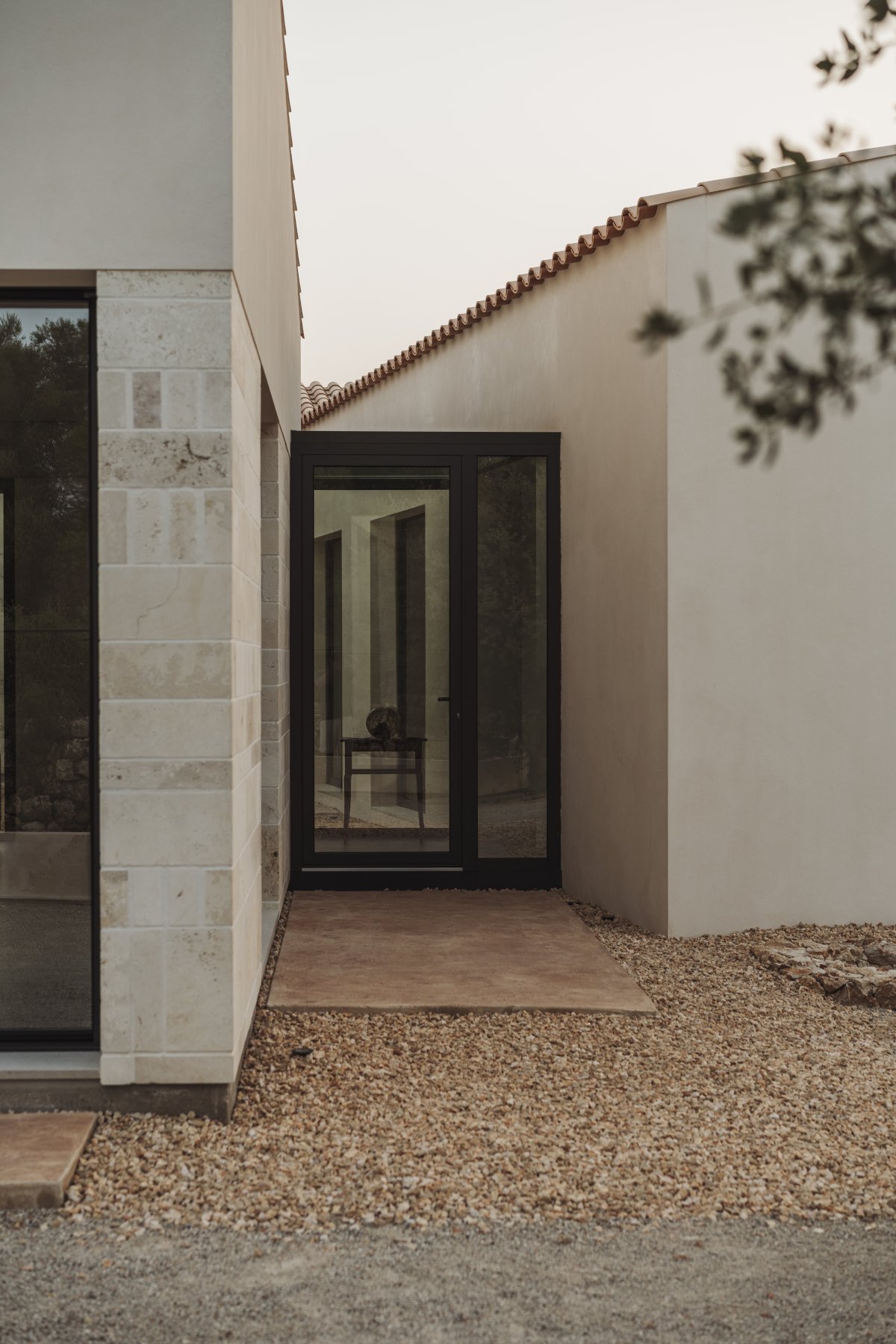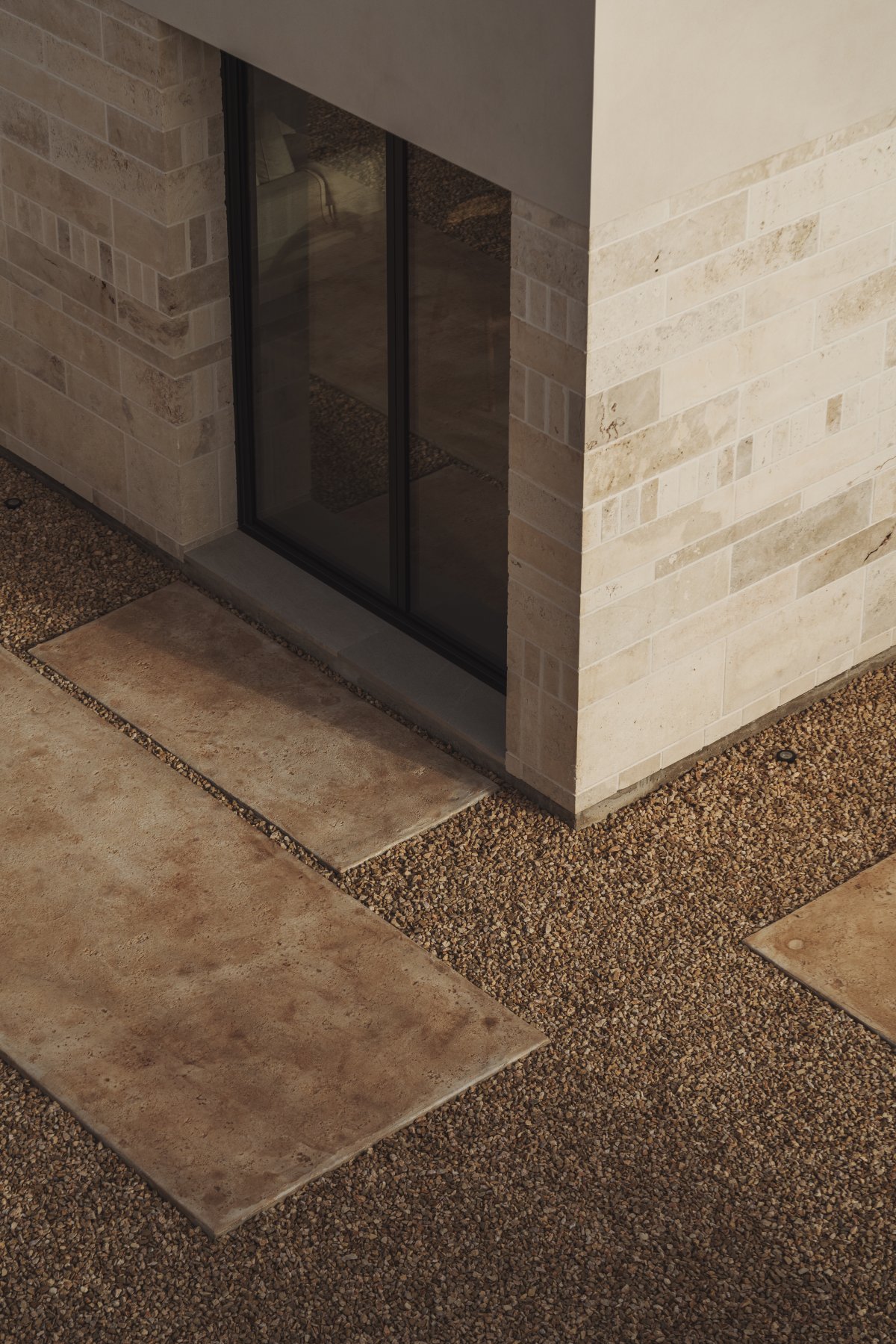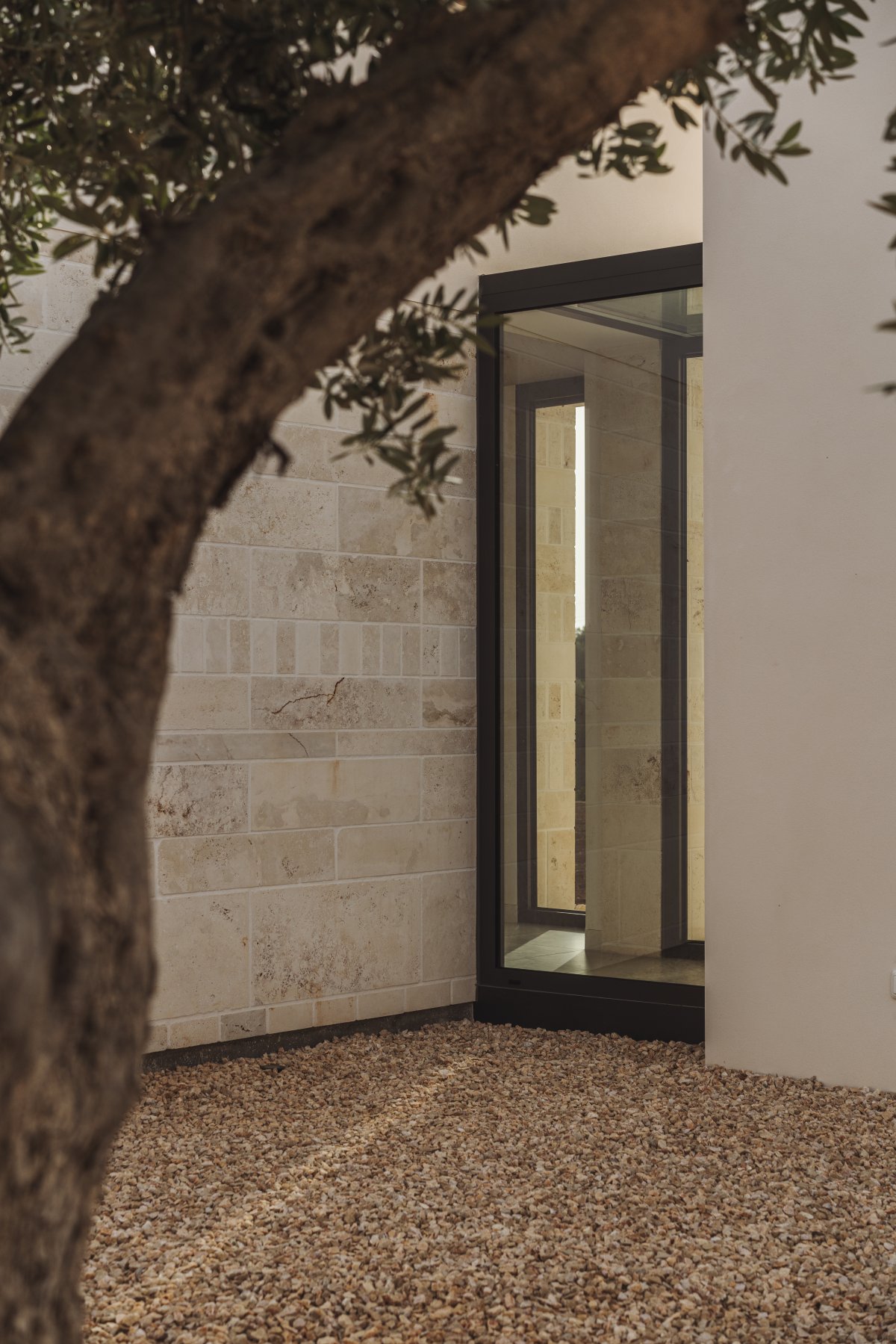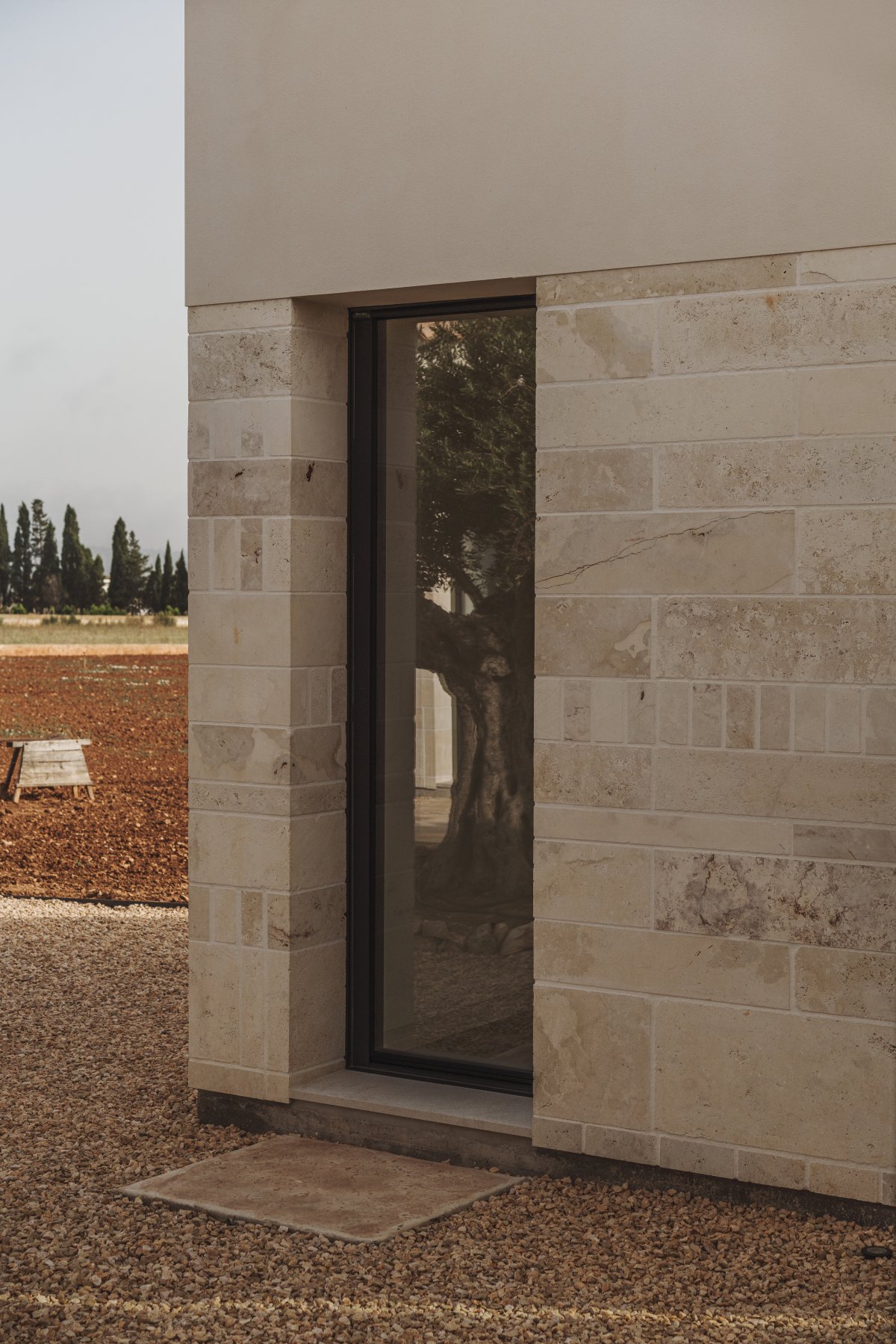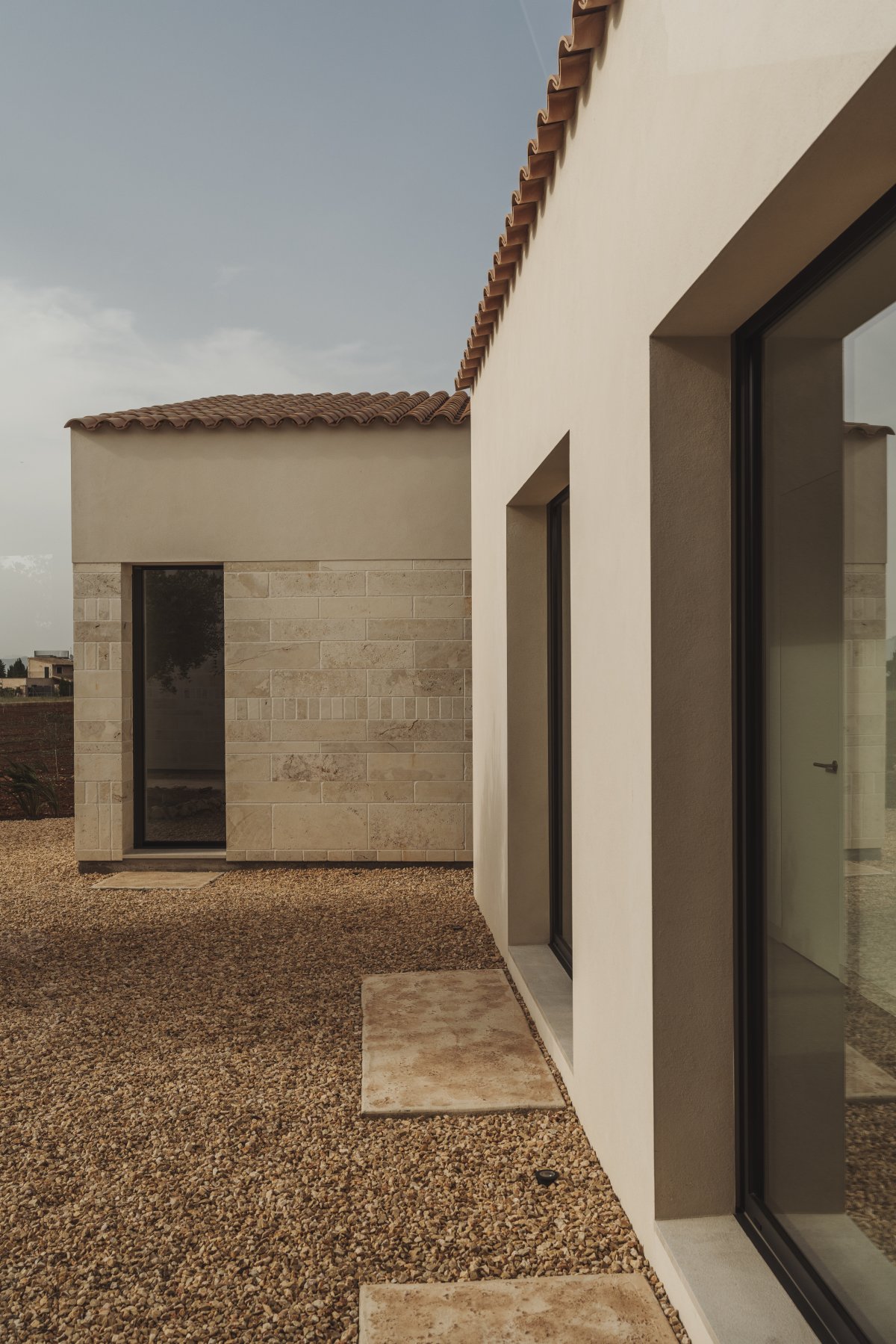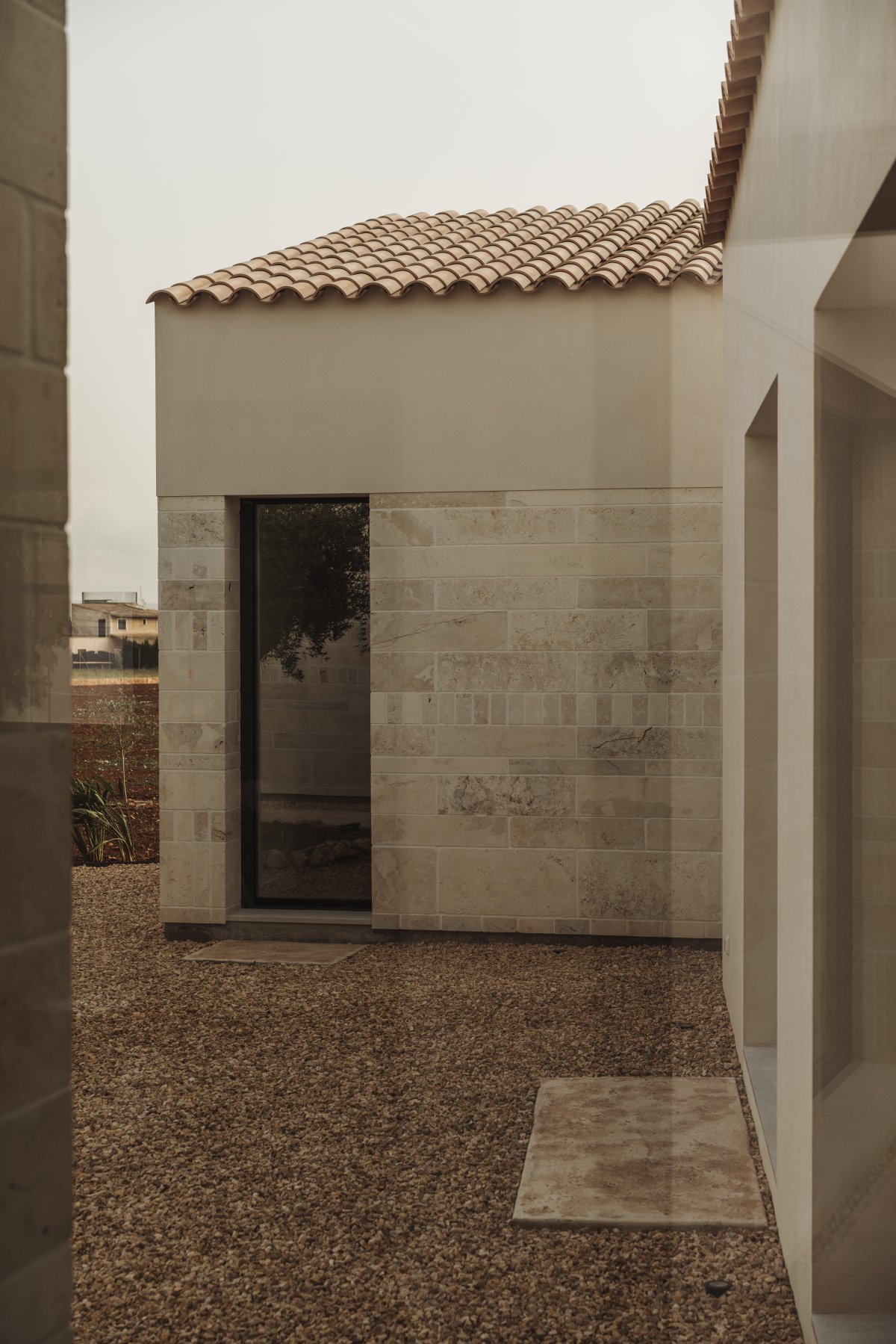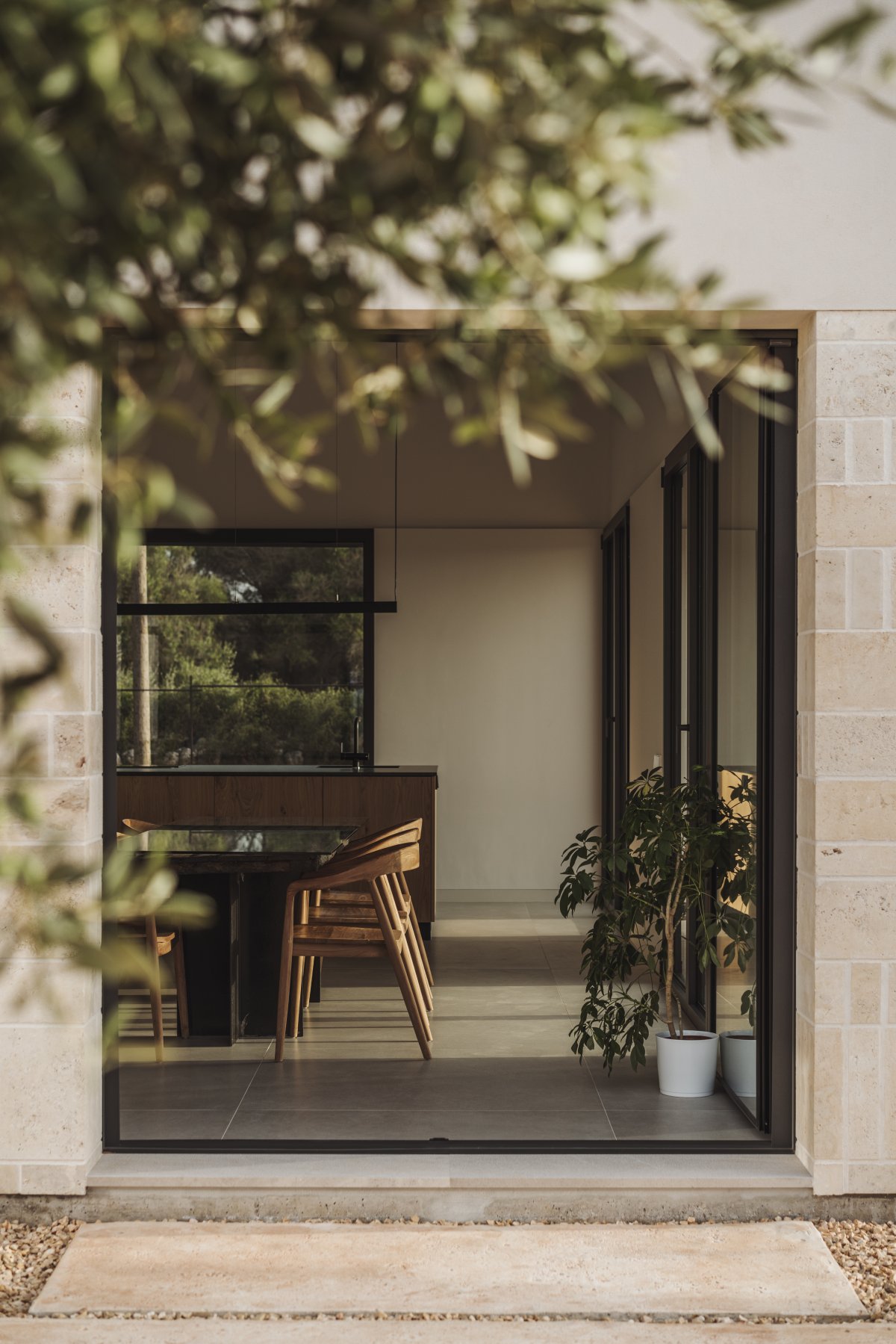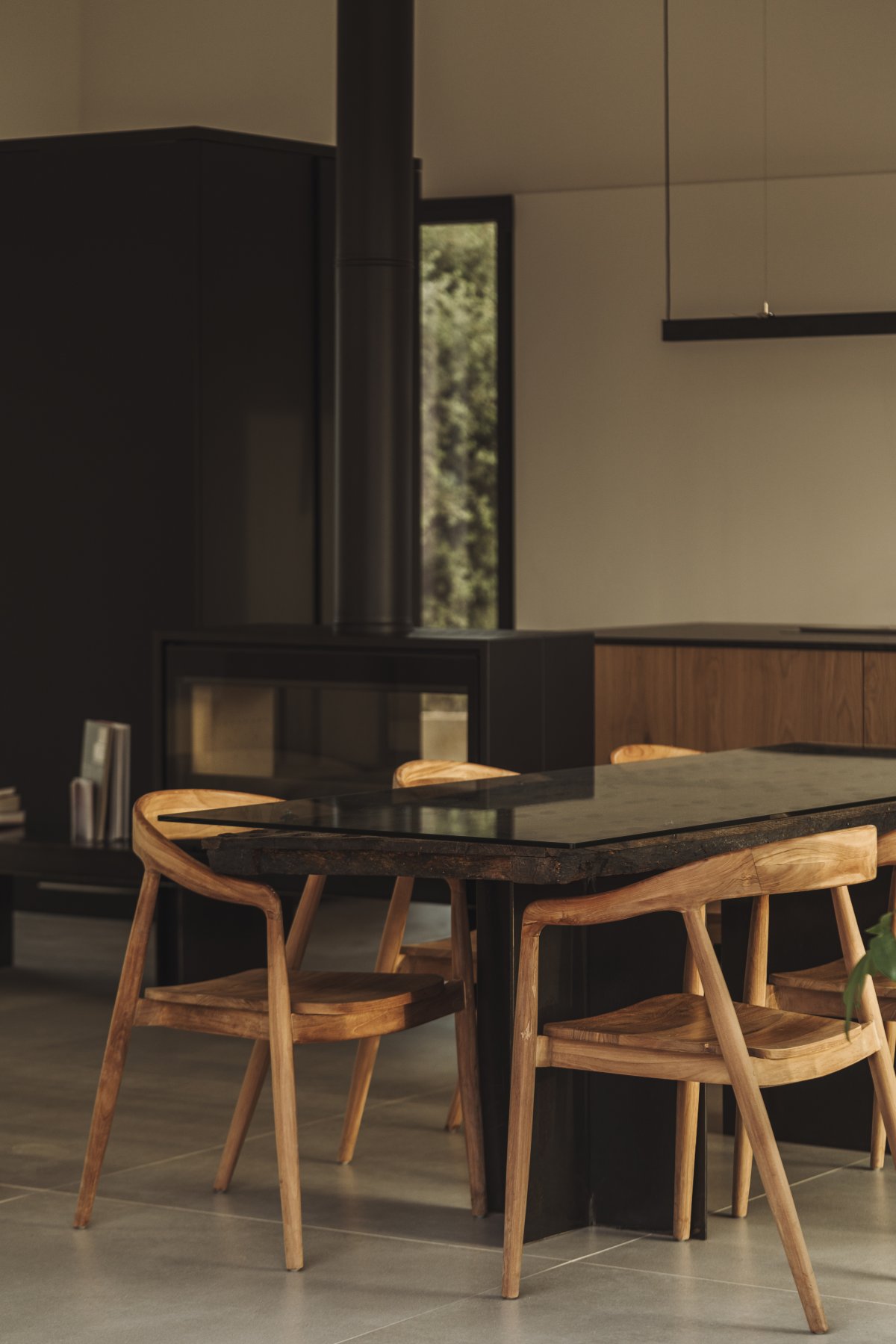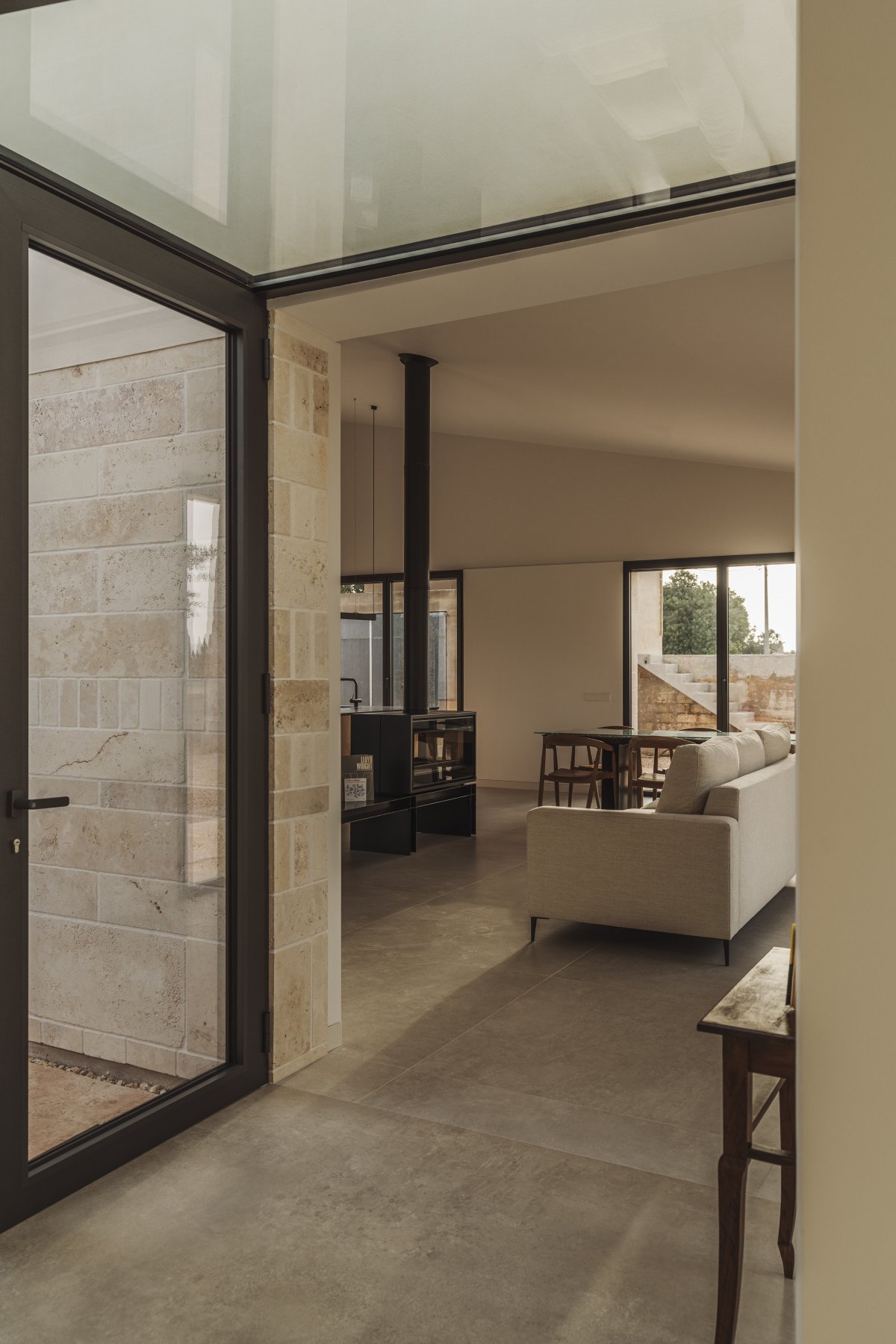
In the town of Muro, in Mallorca, we find a place in the rural area marked by an agricultural past where two constructions heavily related to the element of the water appear: a mill, -which used to extract water from the subsoil through a well-and a cistern -dedicated to storage and irrigation this water-. As usual in this type of structure dedicated to the plowing of the land, it is located right on the edge of the plot, close to a path where in a not so distant past the workers of the farm exchanged and developed manual work beyond the harvest.
The proposed project aims to embrace, to collect the history of pre-existences and to capture it into a new architecture in harmony with the location. The site is also decisive in terms of its physical characteristics, both its geometry and its composition mark a main line of the project which translates into a precise choice of materials and layout in the space of a new home. This way, the three volumes erected will dialogue with pre-existing architecture, trying to elevate the understanding and perception of the environment on all scales.
The proposed architecture is related to pre-existence through a selection of materials and forms that respond to a reinvented tradition. The volumes are proportioned in boxes mirroring the geometry of the mill, marked by a low-compartmented petri design. The selection of sandstone as envelope once again refers to the presence of this material both in the mill and in the cistern. On a volumetric and compositional level, the recently mentioned cistern acts as a shawl between the rooms of the house and the mill tower, reinforcing the dialogue between the new and the old. In the house the elongated piece will also try to perform a function similar to that of the cistern, that is, connect the elements to their ends.
The choice of the layout of the three new constructions around the previous ones aims to generate a new intermediate space in the open air, a courtyard in the epicentre of which an olive tree is born as its vortex. To reinforce this characteristic nuclear perception of Mediterranean regions, all the roofs have been arranged towards the centre of the courtyard, adding a higher level of complexity and collection to the space. The elements of connection between the volumes are projected to be practically non-existent, generating a greater complicity between the interior and the exterior and generating a space between the main pieces.
The “mares” stone determines the detailed composition of each of the three volumes, since it acts not only as the visual finishing, but also as its structure. Thus, the façade’s composition is modulated by the measurement of the thirty centimetre long and wide piece. The use of this modular system allows to synthesize the composition both in plant and volumetrically in two types of wall: intermediate and corner; both to be repeated forming spaces of various surfaces to accommodate the use they contain. Through the arrangement of these walls and the openings in offset, it is possible to generate diagonal visuals that connect the exterior with the interior, opening the house to the field and thus, the field entering the house.
To summarize, this project not only embraces the essence and character of the existing constructions, but also extols and weaves them through a new architecture that values the past through the present gaze. It is possible to create one place within another and in dialogue with it. Choices as the continuity of the materials already present, the incorporation of the olive as a symbolic nucleus of union and the generation of a consonant geometry with the environment, allows the project to connect and root the house with the place.
- Architect: NØRA Studio
- Photos: Ricard López

